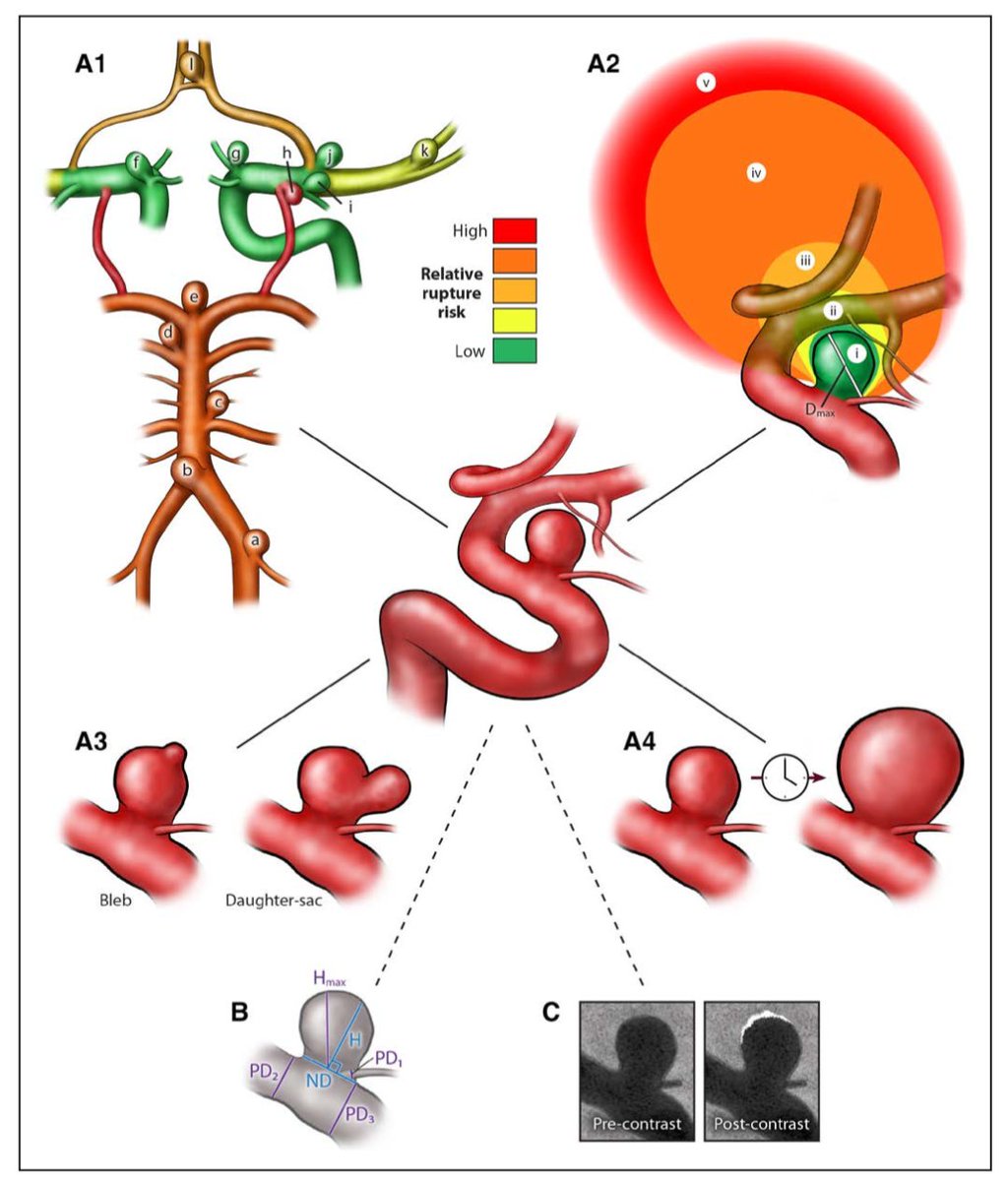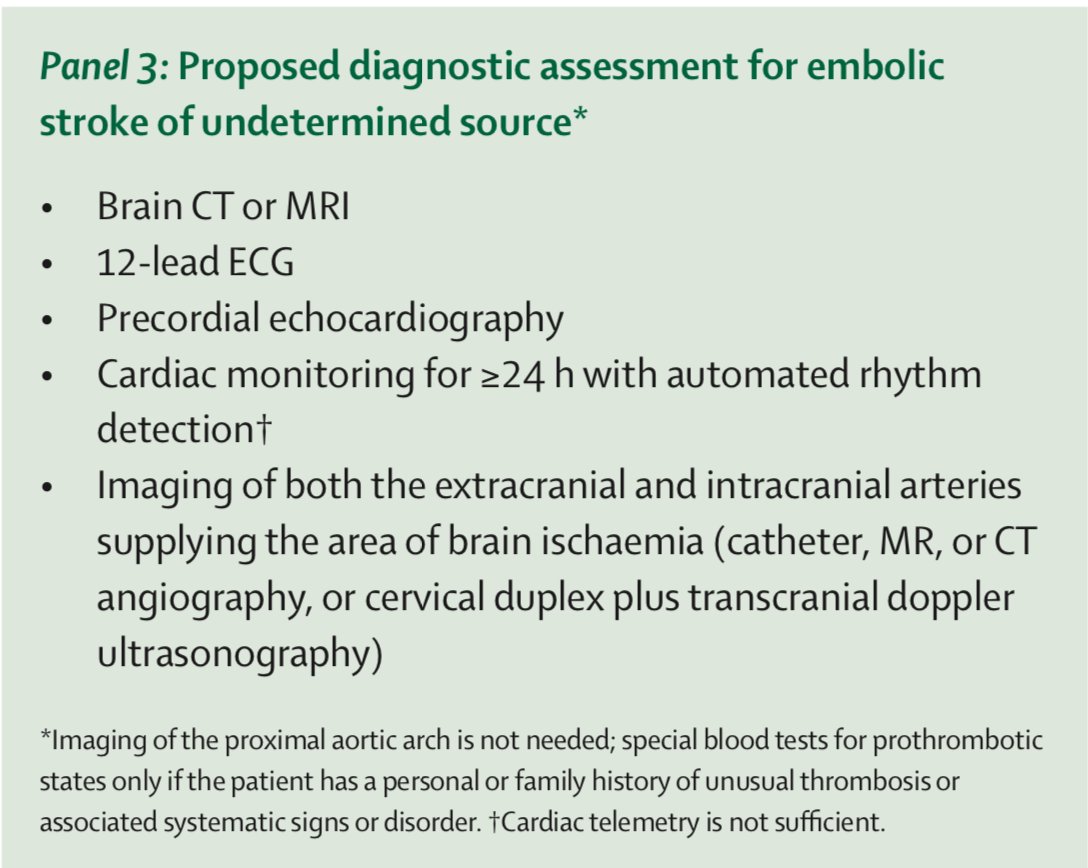
#WeekendLecture
Stroke outcome #prognostication
☝️#Stroke clinicians are routinely asked by patients and families regarding prognosis.
🧠The cognitive process underlying prognostication is #complex, poorly understood, and sometime #biased by personal experiences
Stroke outcome #prognostication
☝️#Stroke clinicians are routinely asked by patients and families regarding prognosis.
🧠The cognitive process underlying prognostication is #complex, poorly understood, and sometime #biased by personal experiences

#WeekendLecture
#StrokePrognostication
#Fact: Clinicians, even those with expertise in stroke, perform poorly in predicting clinical outcomes
In this case-based study, overall accuracy for predicting death or disability at discharge was <20%😩
#JURaSSIC
n.neurology.org/content/81/5/4…
#StrokePrognostication
#Fact: Clinicians, even those with expertise in stroke, perform poorly in predicting clinical outcomes
In this case-based study, overall accuracy for predicting death or disability at discharge was <20%😩
#JURaSSIC
n.neurology.org/content/81/5/4…

#WeekendLecture
#StrokePrognostication
☝️Several prognostic #models have been developed to aid prognostication after ischemic stroke
These models #outperform clinician #judgment in predicting stroke outcomes
ie:
onlinelibrary.wiley.com/doi/10.1111/en…
@GeorgeNtaios
#StrokePrognostication
☝️Several prognostic #models have been developed to aid prognostication after ischemic stroke
These models #outperform clinician #judgment in predicting stroke outcomes
ie:
onlinelibrary.wiley.com/doi/10.1111/en…
@GeorgeNtaios

#WeekendLecture
#StrokePrognostication
☝️Most prognostic models include #age, sex and stroke #severity as important factors
👉Some include #comorbidities or #time to treatment
☝️Newer models include patients with #reperfusion therapies (thrombolysis/MT)
frontiersin.org/articles/10.33…

#StrokePrognostication
☝️Most prognostic models include #age, sex and stroke #severity as important factors
👉Some include #comorbidities or #time to treatment
☝️Newer models include patients with #reperfusion therapies (thrombolysis/MT)
frontiersin.org/articles/10.33…


#WeekendLecture
#StrokePrognostication
#PLAN score
Outcome #AUROC
⬇️ ⬇️
mRS 5-6 0.89
death (30d/1y) 0.85/0.82
IV rTPA treated patients excluded
jamanetwork.com/journals/jamai…
#StrokePrognostication
#PLAN score
Outcome #AUROC
⬇️ ⬇️
mRS 5-6 0.89
death (30d/1y) 0.85/0.82
IV rTPA treated patients excluded
jamanetwork.com/journals/jamai…

#WeekendLecture
#StrokePrognostication
#IScore
Derived from Canadian Stroke Network. Validated in NINDS-tPA/VISTA trials
Outcome AUROC
⬇️ ⬇️
Mortality 30d/1y. 0.85/0.82
@CSC_Stroke
ahajournals.org/doi/10.1161/CI…
#StrokePrognostication
#IScore
Derived from Canadian Stroke Network. Validated in NINDS-tPA/VISTA trials
Outcome AUROC
⬇️ ⬇️
Mortality 30d/1y. 0.85/0.82
@CSC_Stroke
ahajournals.org/doi/10.1161/CI…

#WeekendLecture
#StrokePrognostication
#ASTRAL score
From🇨🇭, validated in cohort from Athens and Vienna
Pre stroke mRS>2 excluded
Outcome AUROC
⬇️ ⬇️
mRS 3-6 (3m) 0.85
n.neurology.org/content/early/…

#StrokePrognostication
#ASTRAL score
From🇨🇭, validated in cohort from Athens and Vienna
Pre stroke mRS>2 excluded
Outcome AUROC
⬇️ ⬇️
mRS 3-6 (3m) 0.85
n.neurology.org/content/early/…


#WeekendLecture
#StrokePrognostication
#HIAT score
Derived from patients treated with #intraarterial thrombolysis
✅Age >75
✅NIHSS>18
✅Glucose>150mg/dl
Outcome AUROC
⬇️ ⬇️
mRS 4-6, discharge ~0.70
ahajournals.org/doi/10.1161/st…

#StrokePrognostication
#HIAT score
Derived from patients treated with #intraarterial thrombolysis
✅Age >75
✅NIHSS>18
✅Glucose>150mg/dl
Outcome AUROC
⬇️ ⬇️
mRS 4-6, discharge ~0.70
ahajournals.org/doi/10.1161/st…


#WeekendLecture
#StrokePrognostication
#THRIVE score
Derived from patient treated with #endovascular therapy
Outcome AUROC
⬇️ ⬇️
mRS 0-2/death(3m) 0.71/0.78
Original:
ajnr.org/content/31/7/1…
Trevo2
ahajournals.org/doi/10.1161/ST…

#StrokePrognostication
#THRIVE score
Derived from patient treated with #endovascular therapy
Outcome AUROC
⬇️ ⬇️
mRS 0-2/death(3m) 0.71/0.78
Original:
ajnr.org/content/31/7/1…
Trevo2
ahajournals.org/doi/10.1161/ST…


#WeekendLecture
#StrokePrognostication
#SPAN_100 score
Derived from patients treated with intravenous thrombolysis
If (Age in years + NIHSS)≥100 = SPAN-100 Positive
Outcome👉ICH / Composite outcome (as NINDS tPa trial)
n.neurology.org/content/80/1/21
#StrokePrognostication
#SPAN_100 score
Derived from patients treated with intravenous thrombolysis
If (Age in years + NIHSS)≥100 = SPAN-100 Positive
Outcome👉ICH / Composite outcome (as NINDS tPa trial)
n.neurology.org/content/80/1/21

#WeekendLecture
#StrokePrognostication
☝️Predictive models "should not be the sole foundation for clinical decision-making in practice and certainly cannot replace a stroke physician’s comprehensive assessment and clinical acumen"
#Art & #Science ⤵️
ahajournals.org/doi/full/10.11…
#StrokePrognostication
☝️Predictive models "should not be the sole foundation for clinical decision-making in practice and certainly cannot replace a stroke physician’s comprehensive assessment and clinical acumen"
#Art & #Science ⤵️
ahajournals.org/doi/full/10.11…

#WeekendLecture
#StrokePrognostication
#Share with us your approach to stroke outcome prediction
Did you have a formal #teaching about stroke prognosis?
How are you dealing with #patients and #families when they ask about prognosis?
Thank you!
#StrokePrognostication
#Share with us your approach to stroke outcome prediction
Did you have a formal #teaching about stroke prognosis?
How are you dealing with #patients and #families when they ask about prognosis?
Thank you!

• • •
Missing some Tweet in this thread? You can try to
force a refresh
























